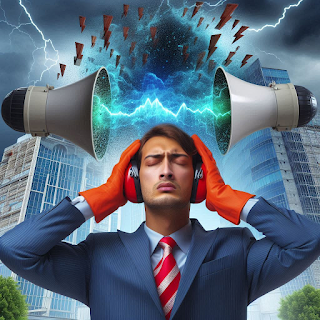Understanding Noise Regulations: A Comprehensive Guide
In the ever-evolving landscape of workplace safety, navigating noise regulations stands as a crucial pillar of ensuring employee well-being and regulatory compliance. As businesses strive to create safer and healthier work environments, understanding the nuances of noise regulations becomes imperative. In this comprehensive guide, we delve into the intricacies of workplace noise monitoring, the role of health and safety consultants, air sampling, COSHH assessments, risk assessments, ventilation testing LEV, and the importance of environmental consultants. By exploring the latest trends and best practises in noise pollution assessment, we aim to equip businesses with the knowledge and tools they need to enhance their services and foster a culture of safety and innovation.
Workplace Noise Monitoring:
Effective workplace noise monitoring is the cornerstone of a robust noise management programme. By employing advanced monitoring techniques such as sound level metres and noise dosimeters, businesses can accurately measure noise levels in various work environments. Real-time monitoring allows for the identification of noise hotspots and the implementation of targeted control measures to protect employees from excessive noise exposure. Additionally, continuous monitoring enables businesses to track noise levels over time and assess the effectiveness of noise control measures.
Health and Safety Consultants:
Health and safety consultants play a crucial role in guiding businesses through the intricacies of noise regulations. These experts provide valuable insights into noise assessment methodologies and assist businesses in developing tailored noise control strategies. By conducting comprehensive noise assessments and risk evaluations, health and safety consultants help businesses identify potential hazards and implement effective control measures. Their expertise ensures that businesses remain compliant with noise regulations while prioritising employee safety and well-being.
Air Sampling:
In addition to noise monitoring, air sampling is essential for assessing workplace environmental quality. Air sampling techniques such as dust monitoring, fume sampling, and VOC analysis provide valuable data on air quality parameters. By identifying airborne contaminants, businesses can mitigate health risks and ensure a safe working environment for employees. Integrating air sampling into noise assessment protocols enables businesses to address multiple safety concerns simultaneously, promoting holistic risk management.
COSHH Assessments:
Control of Substances Hazardous to Health (COSHH) assessments is a fundamental aspect of chemical safety management in the workplace. COSHH assessments involve identifying hazardous substances, evaluating exposure risks, and implementing control measures to minimise health hazards. By conducting COSHH assessments regularly, businesses can protect employees from noise-related health risks and ensure compliance with regulatory requirements.
Risk Assessments:
Risk assessments are essential for identifying and managing workplace hazards, including noise-related risks. By systematically evaluating potential hazards and their associated risks, businesses can implement control measures to mitigate risks effectively. From engineering controls such as noise barriers and acoustic enclosures to administrative measures such as job rotation and personal protective equipment (PPE), risk assessments help businesses create safe working environments and prevent noise-induced hearing loss.
Ventilation Testing LEV:
Local Exhaust Ventilation (LEV) systems play a crucial role in controlling exposure to airborne contaminants in the workplace. Regular ventilation testing ensures that LEV systems are functioning effectively and providing adequate protection to employees. By conducting ventilation testing LEV, businesses can identify any deficiencies in the ventilation system and take corrective action to maintain air quality standards and protect employee health.
Environmental Consultants:
Environmental consultants offer specialised expertise in assessing and managing environmental risks, including noise pollution. These professionals conduct comprehensive noise assessments and provide recommendations for noise control measures. By collaborating with environmental consultants, businesses can ensure compliance with noise regulations and minimise the environmental impact of their operations.
In conclusion, understanding noise regulations is essential for businesses seeking to create safe and healthy work environments. By incorporating the latest trends and best practises in noise pollution assessment, businesses can enhance their services and protect employee health and well-being. From workplace noise monitoring to COSHH assessments and risk evaluations, businesses must prioritise regulatory compliance and employee safety to thrive in today's competitive landscape. With the guidance of health and safety consultants and environmental experts, businesses can navigate noise regulations with confidence and achieve excellence in workplace safety




Comments
Post a Comment